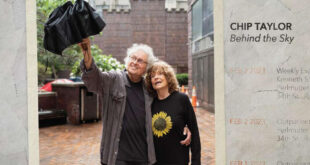At the outset of the American Classical Orchestra‘s March 24 concert, conductor Thomas Crawford joked that the music on the program would be especially suitable for the melancholy among us. But though there were somber themes at Lincoln Center’s Alice Tully Hall – the first part of Schubert’s “Song of the Spirits Over the Water,” the funeral march in Ferdinand Ries’s Symphony No. 1, the darker shades of Brahms’s “Alto Rhapsody” – the concert was anything but a downer. In fact much of it was positively rousing.
The venerable original-instruments orchestra presented two familiar works: the “Alto Rhapsody,” which featured contralto Avery Amereau, and Schubert’s Symphony No. 8, the famous “Unfinished Symphony.” Ries’s music, however, is little known, and Schubert’s “Song of the Spirits Over the Water” (“Gesang der Geister überden Wassern”) seldom heard.
Both were new to me. Ries is remembered today mostly as Beethoven’s friend, copyist, and secretary, but he composed a great deal of music. And I’ve long since come to terms with the fact that I’ll never hear everything the incredibly prolific Schubert wrote in his maddeningly short life.

Schubert’s “Song of the Spirits Over the Water”
Schubert set Goethe’s poem for men’s chorus and a small ensemble of low strings dominated by three basses and four cellos. The absence of high pitches contributes to a grave solemnity, but this short work actually takes an upward curve, from the sadness of a heartbroken soul upward to the hopefulness that pure artistic beauty can’t help but engender.
The whole piece reflects the poem’s watery theme. The ACO men’s chorus nimbly made the melodic leaps in the section depicting a cascade, and the closing section was as uplifting as anything. I had to agree with Crawford that this late work of Schubert’s is a brilliantly orchestrated “mini-masterpiece.” The warm sound of the gut-stringed viols filled the hall with a woodsy redolence that percolated right into my brain. At the same time the eight-part chorus displayed the full rainbow of male vocal tone with superb balance. (Of course, balance is much easier without those pesky sopranos.)
Ferdinand Ries’s Symphony No. 1 in D
Ferdinand Ries’s often-rambunctious Symphony No. 1 in D sounds fun to play. It doesn’t touch that ineffable realm that the music of Beethoven (or Schubert) inhabit, but it’s inventive and melodic and well-constructed, and the performance merited the applause that erupted between movements. Crawford encourages that, for the welcome touch of informality and just plain fun it brings to the ACO’s concerts. (I wish it would become common. For the sake of its survival, our classical music world needs to loosen up.)
The clarinet melody in the B section of the funeral march was a charming highlight. The third movement minuet felt a bit awkward, its contrasts sounding somewhat forced. But a hint of Mozartian inspiration and Beethovenian majesty arose in the finale, thanks as much to the ACO’s invigorating performance as to Ries’s pen.
Brahms’s “Alto Rhapsody”
Brahms’s strange, limpidly beautiful “Alto Rhapsody” calls for a vocalist with depth and clarity throughout her range. Amereau more than measured up. Her mosaic of clear and cloudy timbres enriched Brahms’s sweetly wandering melodies, fulling expressing the composer’s many dimensions of feeling and craft. Together with the orchestra she magnificently sustained the second section’s mysterious emotionality. In the final section the gorgeous redemptive strains of the men’s choir supported the cool tonal control she maintained high and low, and the hymn-like passages sounded fulsome and pure.
Schubert’s Symphony No. 8 (“Unfinished”)
The ACO’s collective mastery shone most fully in the Unfinished Symphony. The gut-string difference was especially plain in the first movement’s soaring melodies. Brass, winds, and strings all pierced through distinctly, the woodwinds particularly winsome in the second (and final) movement. I’ve heard and enjoyed this piece any number of times, but this time I found myself especially disappointed that the music couldn’t linger longer viscerally in the air.
Original Instruments
Often the phrase “original instruments” suggests music of the Baroque period and even earlier. But the ACO is just as adept at re-creating the sonic ambience of the 19th century. At orchestra concerts I listen closely for the French horn parts, having played the instrument in school, but with the ACO it’s even more fun for me, seeing horns with different weird shapes as well as listening for subtle differences in sound. Any amateur musician could pick an instrument and play a similar game.
Crawford’s decidedly unstuffy attitude adds a layer of high spirits to the orchestra’s performances. But it’s their musicianship that makes each concert a near-perfect experience.
 Blogcritics The critical lens on today's culture & entertainment
Blogcritics The critical lens on today's culture & entertainment




